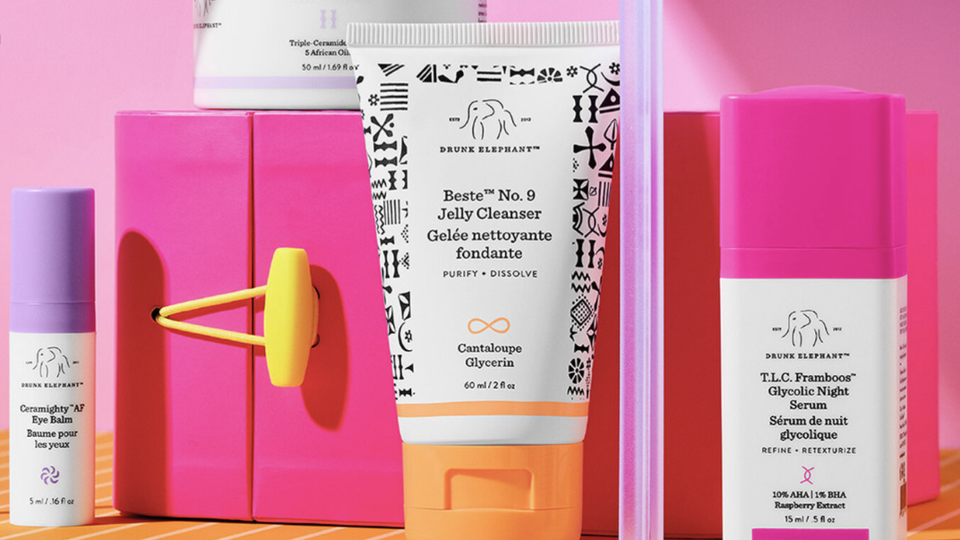Drunk Elephant’s sales dropped 65% in the past year, urging parent company Shiseido to call for a complete brand revamp. Once a cult brand and disruptor in the world of skincare, Drunk Elephant is an interesting case for what happens when a brand loses its voice and core audience and becomes untangled with short-lived viral exposure.
Drunk Elephant’s Identity Crisis
Founded by Tiffany Masterson, Drunk Elephant was among the first brands to lead the clean skincare movement, offering products free of harsh or toxic components, while at the same time focusing on dermatologist-approved ingredients. Masterson formulated products containing active ingredients like AHAs, BHAs and Vitamin C, promising gentle and effective skincare. Through this positioning, the brand attracted both natural beauty fans and clinical skincare users, and quickly gained traction. Its colorful yet minimalist packaging stood out from competitors, helping the brand became very popular on social media and entering Sephora stores in 2015.
By 2019, Drunk Elephant amassed $120 million in net sales and was ranked most popular skincare brand across all its retailers. It was acquired that same year by Shiseido for $845 million, making it one of the biggest skincare and beauty acquisitions of the decade. Under its new ownership, the brand expanded into body and haircare, entered new markets and grew its customer base, which mainly comprised women aged 25-40 with a budget to spend on premium skincare. Drunk Elephant sits in the prestige category, with products ranging between $20 and $100, making it a premium yet relatively mass-market brand unlike higher-end luxury skincare brands.
As the trend grew bigger, safety concerns arose among parents, dermatologists as well as regulators, concerned about the effects of such adult and mature skincare products on kids. This “Sephora kids” trend backfired and negatively impacted the brand’s equity, creating a disconnect between the brand’s core audience and its recent buzzworthy consumers. Tweens likely pushed away the brand’s older customers, and bringing them back might be challenging. Sales plunged 65% in the past year, with the brand’s main market – Americas – being the most affected in this sharp decline. Now, Shiseido is focused on “rebuilding brand engagement” with a goal to “leverage new messaging to drive awareness on clinical and high-performance skincare and drive offline consumer engagement by educating beauty advisors at retail touchpoints”, as shared in the company’s 2025 Q1 presentation.
Will a brand revamp work? Given the intense competition in the skincare space, and the fact that now dozens of new clean and effective skincare brands have seen light of day since Drunk Elephant was born, the task might prove challenging.
Drunk Elephant’s current struggles are an unfortunate reminder of the risks of short-lived viral trends fueled by social media. The brand’s detour into a much younger consumer group cost it both credibility and connection with its original audience, something that may take significant efforts to rebuild. As Shiseido attempts a reset, the challenge will not just to win back customers but to re-establish its brand voice and clear identity in a very crowded market. The clean and clinical skincare space Drunk Elephant helped define ten years ago is now highly competitive, making it even more essential for the brand to reclaim the unique, differentiated brand identity that helped it thrive.

